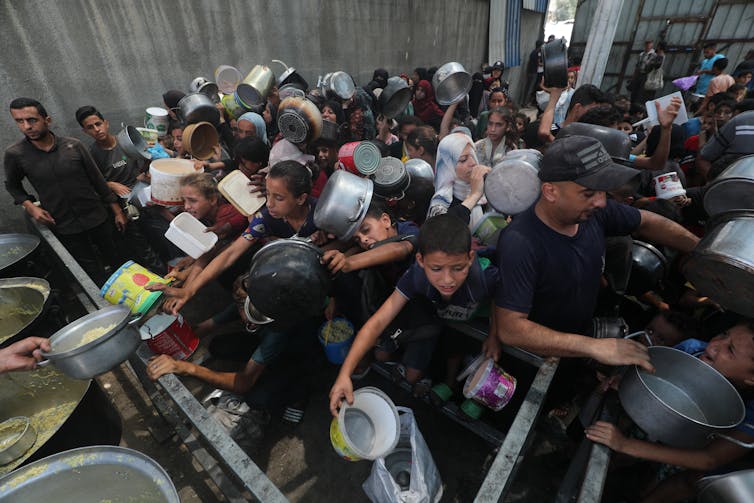Source: The Conversation – Canada – By Ramona Alaggia, Professor, Social Work, University of Toronto
The long-awaited Oasis reunion tour is a rousing success. Since launching in Wales in July, the band has been selling out shows across four continents, including two stops in Toronto.
Reviews have been glowing, and fans are thrilled not just with the music but also with the sight of Noel and Liam Gallagher showing each other genuine brotherly affection on stage — something that once seemed impossible.
This is a far cry from 2009, when Oasis broke up after an epic fallout. Noel, the elder brother, announced he could no longer put up with Liam’s drug-fuelled antics and frequent no-shows. The brothers then spent nearly 15 years estranged.
Read more:
Oasis reunion: How to stop your sibling feud from becoming a lifelong estrangement
Painful childhood
Their conflict isn’t surprising when you consider their childhood. Research shows that family violence and abuse can have lasting effects on sibling relationships.
In the Gallaghers’ case, Noel has spoken of being abused by their father, and both brothers witnessed domestic violence against their mother. Growing up with these adversities can make close family bonds harder to sustain — and may help explain the long rift between them.
So what’s made the difference? How have they managed to heal wounds and reunite? One answer may be resilience.
In my research, I’ve found that resilience is what allows some people, with the right support and circumstances, to rise above adversity and come out stronger. Back in 2017, I explored how this might apply to the Gallagher brothers, who grew up in a difficult and sometimes violent home.
Read more:
The Oasis brothers: Father’s abuse explains feud, resilience could end it
Parental influence
Resilience is a complex idea, and one way to understand it is through social learning theory. The basic idea is that we learn from the examples around us.
For the Gallaghers, growing up in a violent and chaotic home meant they were exposed to unhealthy patterns of behaviour and relationships. But at the same time, they also had a powerful positive influence in their lives through their mother, Peggy.
By ultimately leaving her abusive husband, despite the difficulties that followed, she modelled to her children that there are alternatives to destructive relationships.
This balance of negative and positive role models matters. Harmful examples can damage development, but protective role models can demonstrate healthier ways of coping, relating and moving forward.
In 2024, when the brothers announced their reunion tour, I revisited their story offering ideas on how they might get along to make the tour a success and how they might finally put their long-running feud behind them.
I suggested that counselling focused on conflict resolution could help. These approaches often include learning skills like open communication, active listening, exploring options together, collaborating, compromising, and aiming for a win-win solution.
Apologizing and avoiding casting blame are also important parts of the process. While we may never know if the Gallagher brothers were provided any of these supports, or used them to resolve their conflicts, it’s clear they’ve achieved some significant measure of reconciliation.
Noel has even recently talked about how much he enjoys being around his brother and how proud he is of him.
Not looking back in anger
The combined raw talent of the Gallagher brothers, along with the drive and persistence to form a band, captured the hearts of a generation of music-lovers and is continuing to attract new and younger fans around the world.
After years apart, their return to the stage shows that reconciliation is possible and that even the most fractured relationships can find a way forward.
Watching the Gallaghers side by side on stage, frequently laughing and embracing, it seems clear that resilience, combined with a genuine desire to reconcile, has helped bring them back together.
Their reunion is more than a comeback tour; it’s a story of overcoming adversity that speaks to a universal hope. They’re showing that even long-standing family conflicts can be healed.
![]()
Ramona Alaggia’s studies have been funded by the Social Sciences and Humanities Research Council of Canada.
– ref. The triumph of the Oasis reunion: Resilience rules the day as the Gallaghers end their feud – https://theconversation.com/the-triumph-of-the-oasis-reunion-resilience-rules-the-day-as-the-gallaghers-end-their-feud-263789




